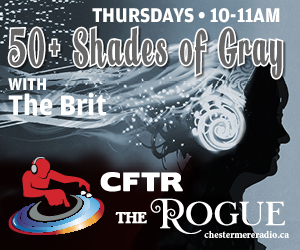I was browsing the aisles of my friendly neighbourhood booze merchant last week, when I bumped into one of those in-store tastings hosted by a roving wine rep.
Always eager to broaden my horizons, I sampled the wares, and politely listened to the spiel about the wines in question. Imagine my surprise to find that the wine rep was from Austria, and was pouring samples of three different Blaufränkish wines.
For those not familiar with the grape, Blaufränkish grows across Central Europe, primarily in Austria, Germany, Hungary, and the Czech Republic. The origins of the grape are lost in the wine-soaked mists of time, but modern DNA profiling points to the ancestral home of the Blaufränkish grape in what is now modern-day Slovenia.
The grape is thought to be a hybrid that has existed since the Middle Ages, although it was not officially documented until 1862, when it was the unexpected star of a viticultural exposition in Vienna, then considered the cultural capital of Europe.
Unfortunately, unlike its noble cousins from France / Italy / Spain, the Blaufränkish grape has largely remained in Central Europe and the Balkans, gaining only modest popularity in the wider world.
The Blaufränkish grape tends to bud early in the spring and ripen late in the fall, making is susceptible to both early frosts and mildew. Fortunately, the grape is quite hardy and vigorous, so can be used to produce large amounts of low-quality wine, or with proper pruning in the vineyard, are more reasonable amount of high-quality wine.
Blaufränkish is the second-most popular grape in Austria, and is also a parent of the most popular Austrian grape Zweigelt, itself a cross of Blaufränkish and Saint Laurent, which is itself a cross of Pinot Noir and another unknown parent.
Grapes are notoriously susceptible to spontaneous mutations and hybridization in the wild, which is why we have thousands upon thousands of grape varietals, but only a few hundred that are commonly used for winemaking. There is an entire field of Botany known as Ampelography, which is dedicated to the identification and classification of grapevines, which is well-funded by the global wine industry in the ongoing search for that perfect combination of hardiness, disease resistance, vigor, and flavour.
While the majority of Blaufränkish is grown in Austria and neighbouring countries, the grape also has significant plantings in Washington State, where the grape is called Lemberger.
Unfortunately, there is a nasty-smelling cheese with the similar sounding name of Limburger, which has made the Lemberger grape difficult to sell, so many Washington winemakers label their bottles as Blue Franc or other proprietary names to appease the fickle tastes of the consumer market.
Blaufränkish grapes grown in Austria tend to be a deep red with notes of red currants and blackberry, and a deep ruby hue.
The same grape grown in Washington is more commonly used for lighter-bodied blends, and have a spicier flavour and notes of ripe berry fruits due to the local terroir.
The modern wine industry in Washington is only five decades old, beginning in 1967, when a ragtag bunch of hippies thought it would be groovy to harvest the natural bounty of mother nature, and Blaufränkish was one of the first grapes to be planted, as it was thought to be well suited to the cooler climates far north of the Californian wine country.
Closer to home, we have a few scattered plantings of Blaufränkish in the Niagara Peninsula and Okanagan Valley wine regions of Canada, although with far fewer acres under vine than our Yankee cousins.
My favourite local Blaufränkish wine is from the Mount Boucherie Estate Winery in Kelowna, which I make a point of visiting on my annual pilgrimage to the Okanagan Valley to sample the best of Canada’s wine offerings.
The Mount Boucherie Blaufränkish is highly aromatic, with plenty of peppery and spicy notes on the nose, and bursting with ripe plum flavours on the palate. The wine is medium-bodied, and the light tannins make it easy to pair with chorizo or grilled sausages.
You can find the Mount Boucherie Blaufränkish at well-stocked wine shops in Alberta, which will also have selections from Austria and Washington. Why not try all three and see which you prefer?








